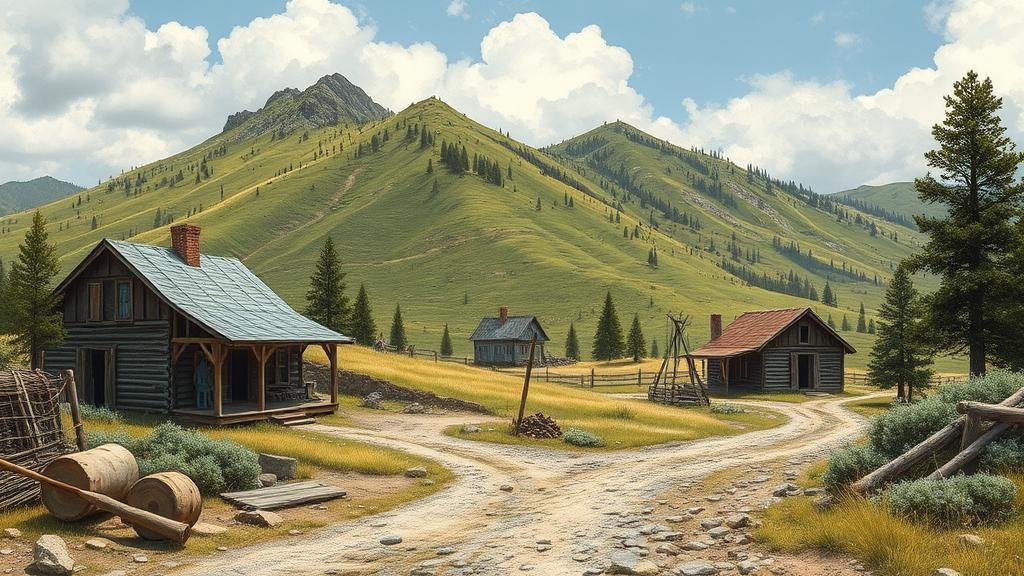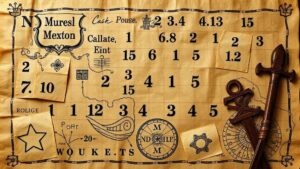Exploring Pioneer Settlements for Hidden Gold and Silver
Exploring Pioneer Settlements for Hidden Gold and Silver
The historical allure of gold and silver has driven countless adventurers to seek their fortune in pioneer settlements across North America. These settlements, which flourished during the 19th century and early 20th century, were not only hubs of economic activity but also hotspots for mineral discovery. This article explores the fascinating world of pioneer settlements with a specific focus on the hidden treasures of gold and silver, examining their historical contexts, methods of exploration, and the implications for modern treasure hunters.
Historical Context of Pioneer Settlements
Pioneer settlements emerged during periods of westward expansion in the United States, particularly during the California Gold Rush of 1848 and the subsequent silver rushes in Nevada. By 1850, Californias population had increased from approximately 14,000 to nearly 250,000 due to the influx of fortune seekers. The pursuit of precious metals transformed small communities into bustling towns almost overnight, which would fade away as resources were depleted.
Historically, these settlements often took shape in areas known for mineral deposits. For example, Virginia City, Nevada, had extensive silver mining operations that attracted thousands of miners and related businesses. Comstock Lode, discovered in the early 1850s, was one of the first major discoveries of silver ore in North America and is often credited with the rise of these settlements. By the 1860s, Virginia City had become one of the wealthiest cities in the nation.
Methods of Exploration and Discovery
The methods employed by early settlers in their quest for gold and silver were rudimentary yet effective for the times. Techniques such as panning, sluicing, and hard rock mining laid the groundwork for mineral extraction. Miners would use simple tools, like pans and shovels, to sift through river beds, seeking to separate gold particles from sediment.
- Panning: This method involved filling a pan with sediment from stream beds and swirling water to wash away lighter materials, allowing heavier metals to settle at the bottom.
- Sluicing: Similar to panning, sluicing utilized a wooden trough to channel water over gravel and sand, capturing heavier particles in a series of riffles.
- Hard Rock Mining: This technique involved digging tunnels into hillsides to access lodes of ore directly, often requiring more advanced tools and strategies.
Modern technological advancements have transformed the methods of exploration. Geophysical methods, such as ground-penetrating radar and aerial surveys, allow treasure hunters to search for mineral deposits with greater precision and efficiency. For example, companies like Goldspot Discoveries are employing machine learning algorithms to analyze geological data and identify potential gold and silver deposits.
Case Studies of Notable Discoveries
Numerous cases of hidden gold and silver provide valuable insights into the exploration of pioneer settlements. Wickenburg Gold Mine in Arizona, discovered in 1863, illustrates the unpredictability of treasure hunting. Initially estimated to contain a modest amount of gold, extensive development revealed substantial deposits that led to the establishment of a thriving mining community.
Another remarkable example is the discovery of the Lost Dutchman Mine, reputed to be a rich gold mine located in the Superstition Mountains of Arizona. Although its existence has never been definitively proven, the legend has sparked countless expeditions, as treasure hunters seek to unlock its secrets. e have been numerous reports of individuals who have ventured into the mountains in search of the lost treasure, often facing perilous conditions along the way.
Challenges and Considerations for Modern Explorers
While the thrill of discovering hidden gold and silver continues to attract modern treasure hunters, several factors must be considered. Legal restrictions on mining claims can impose limits on where individuals can explore. The Bureau of Land Management (BLM) governs the use of public lands, requiring permits for mining activities in many instances. Plus, ethical considerations regarding land preservation and respect for historical sites pose an ongoing challenge for explorers.
Also, modern exploration is fraught with dangers, including harsh weather conditions and difficult terrain. Treasure hunters must equip themselves appropriately and practice sound safety measures to ensure their expeditions are both productive and secure.
Real-World Applications of Exploration Techniques
The techniques used in exploring pioneer settlements for hidden treasures can have applications beyond treasure hunting. For example, archaeological studies often use similar methods to locate historical sites and artifacts. intersection of mining techniques with environmental science creates opportunities for sustainable practices that respect both history and nature. Modern mining companies are increasingly investing in environmentally friendly methods that reduce their carbon footprint and restore mined lands.
Actionable Takeaways
For those interested in exploring pioneer settlements for hidden gold and silver, here are some actionable takeaways:
- Research historical mining areas using resources like the U.S. Geological Survey to identify potential sites.
- Familiarize yourself with local laws and obtain necessary permits before exploring public lands.
- Use modern technology, such as metal detectors and geophysical surveying equipment, to enhance your chances of discoveries.
- Network with local treasure hunting groups and historians to gain insights into effective techniques and strategies.
To wrap up, the exploration of hidden gold and silver in pioneer settlements remains a captivating endeavor, steeped in history and promise. By understanding the past, utilizing modern technology, and adhering to legal and ethical standards, both amateur and professional explorers can embark on fruitful adventures in search of lost riches.



